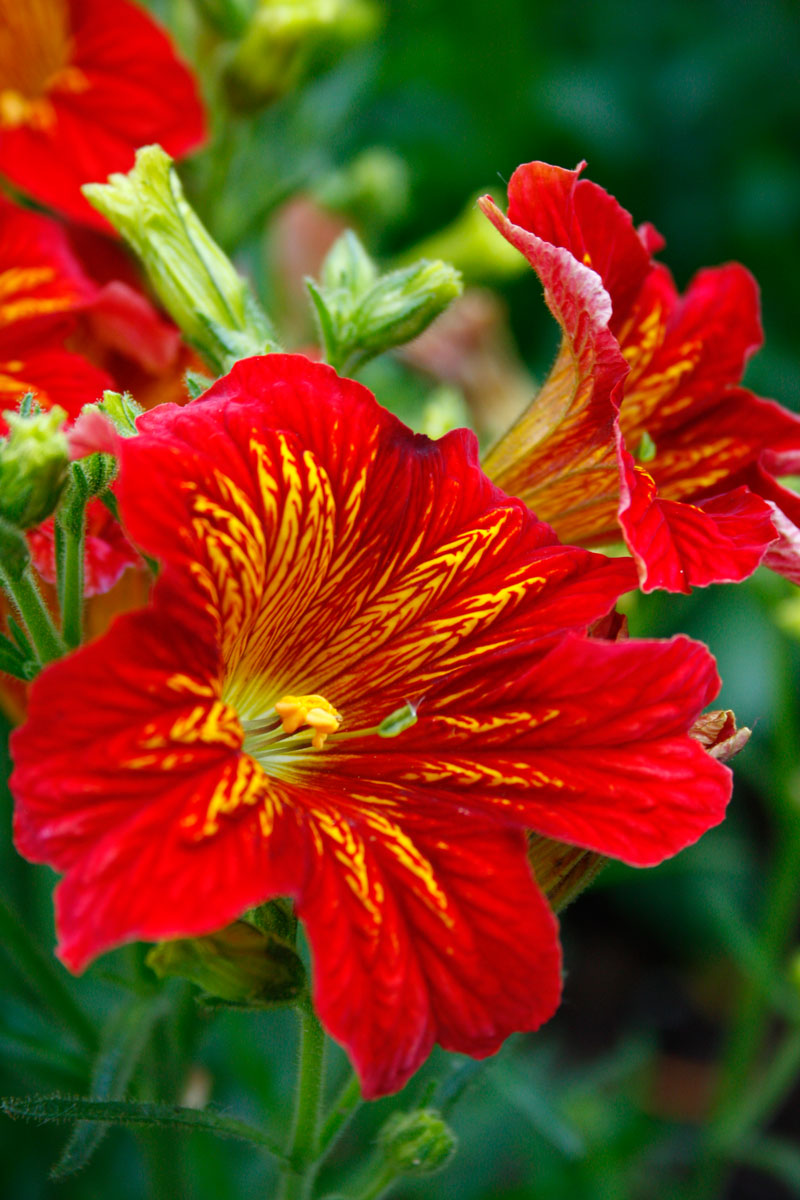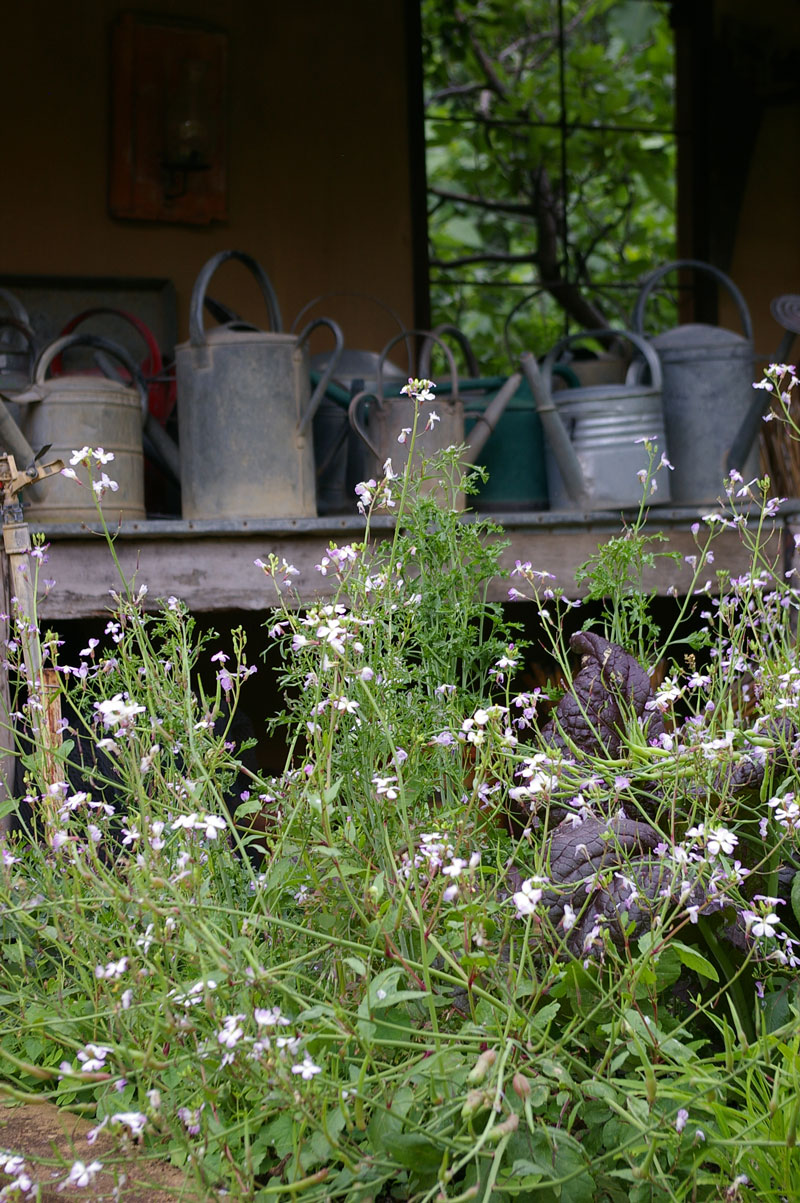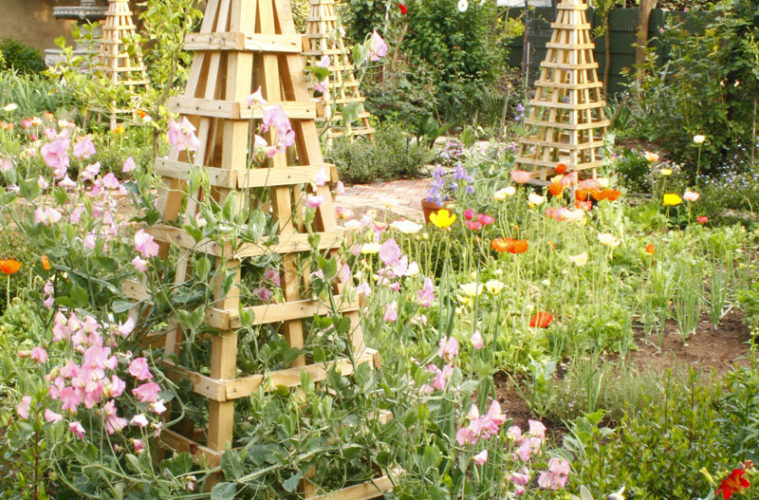Jane Griffiths, author of Jane’s Delicious Garden, and landscape designer Natalia Sinclair, give us the lowdown on what to plant in your potager as well as how to maintain and landscape it
READ THE BASICS OF GROWING A POTAGER: PART 1 HERE
What to plant?
Jane: The choice of plants depends on the size of your potager, what you like to eat and what time of year it is. Familiarise yourself with plants’ requirements before starting. A potager should include a mixture of vegetables, herbs and edible flowers.
There are endless combinations from which to choose where one plant benefits another. Many plants, such as feverfew, do the work of insecticides by repelling pests. Others, such as calendula and clover, are magnets for beneficial insects, inviting bees, wasps, spiders and butterflies into the garden. And then there are plants, such as comfrey, which absorb nutrients from deep in the soil, thereby feeding the other plants.
Natalia: I love to choose plants for their colour and form; the burnt orange spears of Leonotis leonurus set against the soft, grey foliage of the curry plant (Helichrysum italicum) is a wonderful combination.
Use companion planting principles when mixing and matching plants. Dill and fennel don’t like to be neighbours and mint, if left to its own devices, will take over. One of my favourite summer planting combinations is tomatoes growing up obelisks and basil, strawberries and marigolds at the base. Cabbages, beans, onions, spinach, pansies and beetroot are great companions in your winter garden.
Trimmed hedges are too much maintenance for my liking, I prefer borders of cascading catmint, Nepeta cataria, which look great and keep the pests at bay. Avenues of chives, sage, thyme and marigolds work just as well.
Hard landscaping
Natalia: Reclaimed items are always fun to use in the garden, so instead of a pot as a focal point, use an old bath that has been made into a water feature. Consider using old doors or window shutters as screens for bare walls. Old tin cans, gutters, tin pots or kettles can be assembled in an interesting display and potted up with sun-loving herbs.
Gravel, bark mulch, natural stone or cobblestones can be used for the pathways. For a softer alternative, you can use sleepers interplanted with herbs. Jane: Don’t be misled by the old-fashioned notion that a vegetable garden is the poor cousin of the flower garden and should be tucked away out of sight. A beautiful potager should encourage people to explore and enjoy the garden. Here are some tips for creating a practical, yet inviting space using hard landscaping materials:
Jane: Don’t be misled by the old-fashioned notion that a vegetable garden is the poor cousin of the flower garden and should be tucked away out of sight. A beautiful potager should encourage people to explore and enjoy the garden. Here are some tips for creating a practical, yet inviting space using hard landscaping materials:
- Include an archway with rambling roses at the entrance. Structures like archways, trellises and tripods not only look decorative, but will help to maximise space and can be made from a variety of materials to suit your potager’s style.
- Add statues and sculptures as focal points.
- Include a water feature.
- Add containers or interesting pots. Introduce seats where you can relax and enjoy the garden.
Maintenance
Natalia: This kind of garden is labour intensive as vegetables and herbs need to be replaced and seasonal crops planted frequently to maintain a constant supply of fresh produce. Feed beds regularly with an organic fertiliser. Keep mulch topped up and watch out for weeds. If you spot any pests or diseases, spray with an organic spray if necessary.

